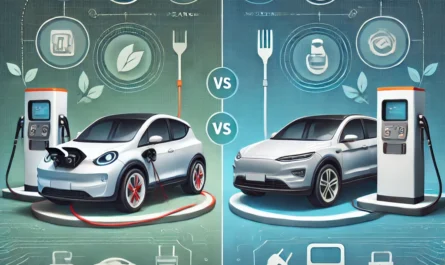Understanding the differences between car models and variants is essential for anyone looking to purchase a new vehicle. In a competitive car market, manufacturers often release numerous models and variants to appeal to diverse consumer needs and preferences. This comprehensive guide provides expert insights into how to differentiate car models and variants, offering you the knowledge to make informed decisions and select the car that best suits your lifestyle, budget, and driving requirements.
Car Models vs. Car Variants
A car model generally refers to the core version of a vehicle a manufacturer offers, representing its base identity in size, shape, and primary function. For example, a Honda Civic or Ford Explorer are popular car models. A variant, on the other hand, is a specific version of a model that includes varied features and specifications, such as a higher-performance engine, additional tech, or different upholstery.
Understanding these distinctions helps clarify why some vehicles with similar body shapes may vary significantly in price, performance, and features.
Importance of Understanding Variants
When purchasing a vehicle, knowing the different variants of a model ensures you don’t overpay for unnecessary features or miss out on desirable upgrades. Variants can drastically change a car’s attributes, influencing its suitability for urban commuting, long-distance travel, or even specific terrain types. Whether you prioritize fuel efficiency, luxury, or tech amenities, selecting the right variant can transform your driving experience.
Key Factors in Differentiating Models
Car models stand apart primarily through factors like size, performance, and design. For instance, a compact sedan differs significantly from a larger SUV or crossover in terms of passenger space, cargo capacity, and ground clearance. Key differentiating factors include:
- Size and Body Type: Sedans, hatchbacks, and SUVs each serve different needs, from compact city driving to spacious family-friendly designs.
- Performance Specifications: Models may differ based on engine power, handling characteristics, and off-road capability.
- Brand Identity: Different brands imbue models with distinct features that reflect their design philosophy and brand identity.
Engine and Performance Options
Variants within a model typically differ most in engine and performance options. Manufacturers offer different powertrains—such as gas, hybrid, and electric—each with unique characteristics in fuel economy, power output, and maintenance needs. Some variants prioritize horsepower and torque, perfect for enthusiasts, while others focus on efficiency, appealing to eco-conscious buyers.
Exterior Design Features
Exterior features can vary widely among models and variants. High-end variants often come with additional design elements, such as upgraded alloy wheels, sportier grilles, or premium paint finishes. These stylistic differences may appear subtle but contribute to the overall aesthetic appeal and market positioning of a model.
Interior Layout and Features
Interior design and features are central to the identity of a car variant. Premium variants often include upgraded materials like leather upholstery, advanced infotainment systems, and heated seats. Practicality is also a factor, with certain variants offering extra space or unique configurations for family-oriented buyers.
Safety Features Across Variants
Safety is a critical consideration when choosing a variant, and some variants come equipped with more comprehensive safety packages. For instance, higher variants often feature advanced driver-assistance systems (ADAS), blind-spot monitoring, and lane-keeping assistance. Base variants, however, may lack some of these features, making it essential to understand safety offerings across variants.
Technology and Infotainment
Technology integration varies significantly between car variants. While entry-level variants may offer basic audio systems and limited connectivity, higher variants frequently include touchscreen infotainment, smartphone integration, premium sound systems, and advanced navigation tools. For tech-savvy buyers, understanding these differences can be a deciding factor.
Fuel Efficiency and Eco-Models
As environmental awareness grows, more car manufacturers offer eco-friendly variants. Hybrid or electric versions of popular models cater to buyers looking for reduced emissions and lower fuel costs. Comparing fuel efficiency and range across variants is essential, especially for those who prioritize green technology or have specific fuel economy goals.
Transmission Options
Transmission type is another defining feature across car variants. Many models offer manual, automatic, and continuously variable transmissions (CVT) options to cater to different driving preferences. Enthusiasts might prefer manual for a more hands-on experience, while those in congested urban areas might opt for automatic for convenience.
You Can Also Read : How to Perform Basic Car Maintenance at Home
Cost and Value Comparison
A major differentiator among models and variants is cost. Higher variants come with additional features, often at a substantial price increase, while base variants offer budget-friendly access to the same core model. Understanding the cost-benefit trade-off between a fully-loaded variant and a standard model can guide you to make a decision that aligns with your budget and needs.



